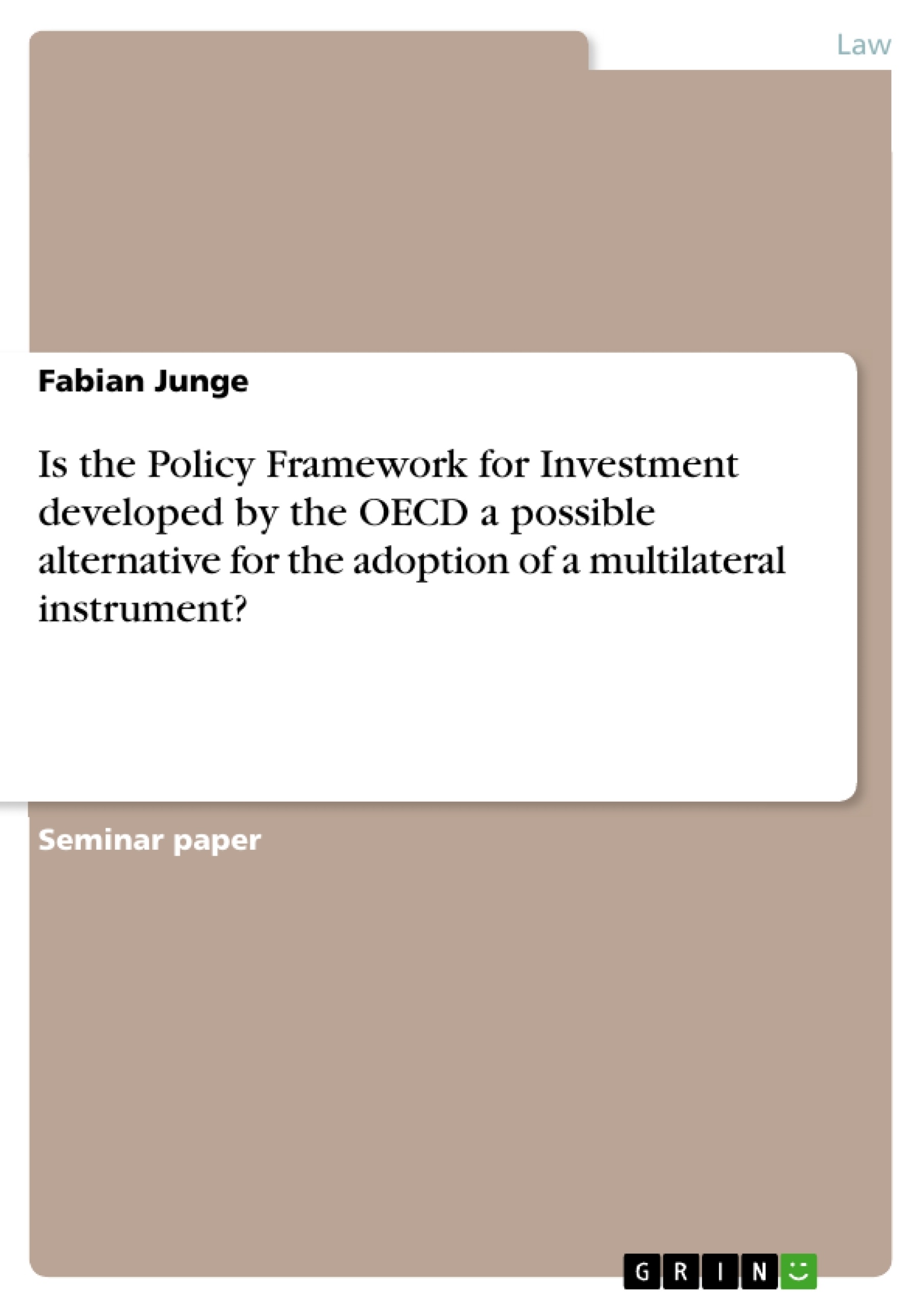When examining the development of foreign direct investment and the effects of multinational
corporations over the last decades, one has to come to the conclusion that the importance increased and
grew significantly. Until the 1970s most of the countries were opposed to foreign direct investment due to
a fear of losing economic and political independence by allowing foreign control over their economic
resources and their key industries. Since the 1990s, there has been a positive turn towards foreign direct
investment and its liberalization, because it is predominantly seen as requirement for economic growth,
productivity increase, creation of export potential and technology transfer. As a result, the amount of
foreign direct investment expanded faster than the world economy and the volume of international trade
resulting in a need to control the investment flows and to regulate the area.1
By virtue of the rather sensitive topic of foreign direct investments, it was impossible in the past for the
international community to agree upon an uniform and harmonized international regime setting out the
standards for international investments. Hence, a multitude of national and international policy rules and
principles govern the relevant aspects in this field resulting in a variety of international investment
agreements. As an example, more than 2670 bilateral investment treaties and more than 270 other
international investment agreements have been adopted globally until the end of 2008.2
Nevertheless, the plurality of the different international investment agreements with their different scopes,
different types, different signatories have led to a patchwork of treaties resulting in a highly fragmented
and incoherent international investment regime. As a result of this and the problems accompanying it,
such as a more and more complex structure and an increase in investment disputes due to the
interpretation and implementation of these treaties, the desire to adopt a general coherent framework for
investment has been stirred, especially by international organizations like the WTO or the OECD.
The OECD (Organization for Economic Co-operation and Development) is an international economic
organization consisting out of 34 countries and was founded in 1961 to stimulate economic progress and
world trade.
Table of Contents
List of Abbreviations
Bibliography
A. Introduction
B. Multilateral Agreement on Investment
I. Advantages
II. Reasons for Failure
1. Controversies
2. Criticism
a. Developing countries
b. NGOs
C. Policy Framework for Investment
I. Advantages
II. Disadvantages
D. Conclusion
- Quote paper
- Fabian Junge (Author), 2012, Is the Policy Framework for Investment developed by the OECD a possible alternative for the adoption of a multilateral instrument? , Munich, GRIN Verlag, https://www.grin.com/document/196515
-

-

-

-
Upload your own papers! Earn money and win an iPhone X. -

-
Upload your own papers! Earn money and win an iPhone X. -

-
Upload your own papers! Earn money and win an iPhone X. -

-
Upload your own papers! Earn money and win an iPhone X. -

-
Upload your own papers! Earn money and win an iPhone X. -

-
Upload your own papers! Earn money and win an iPhone X.

